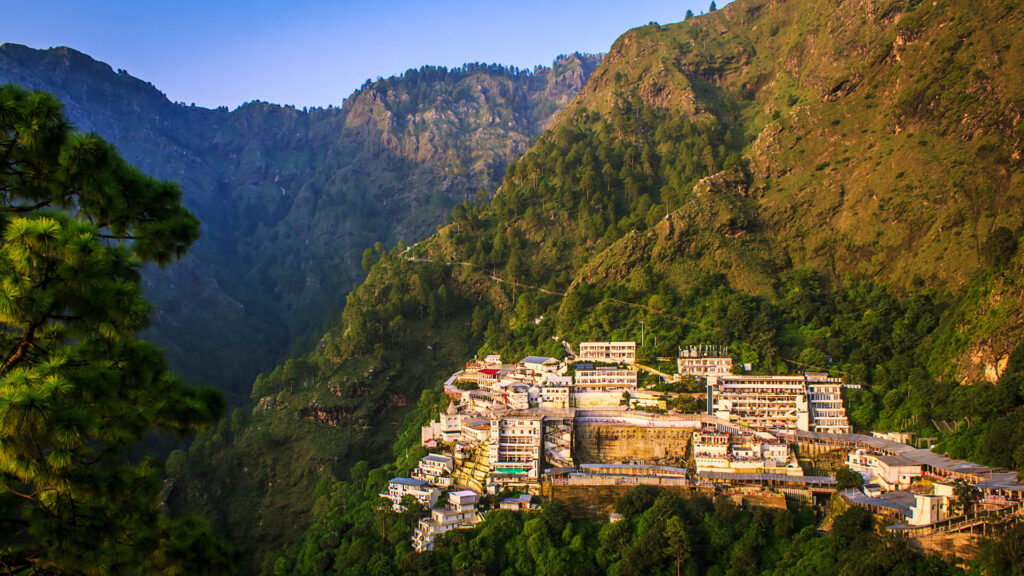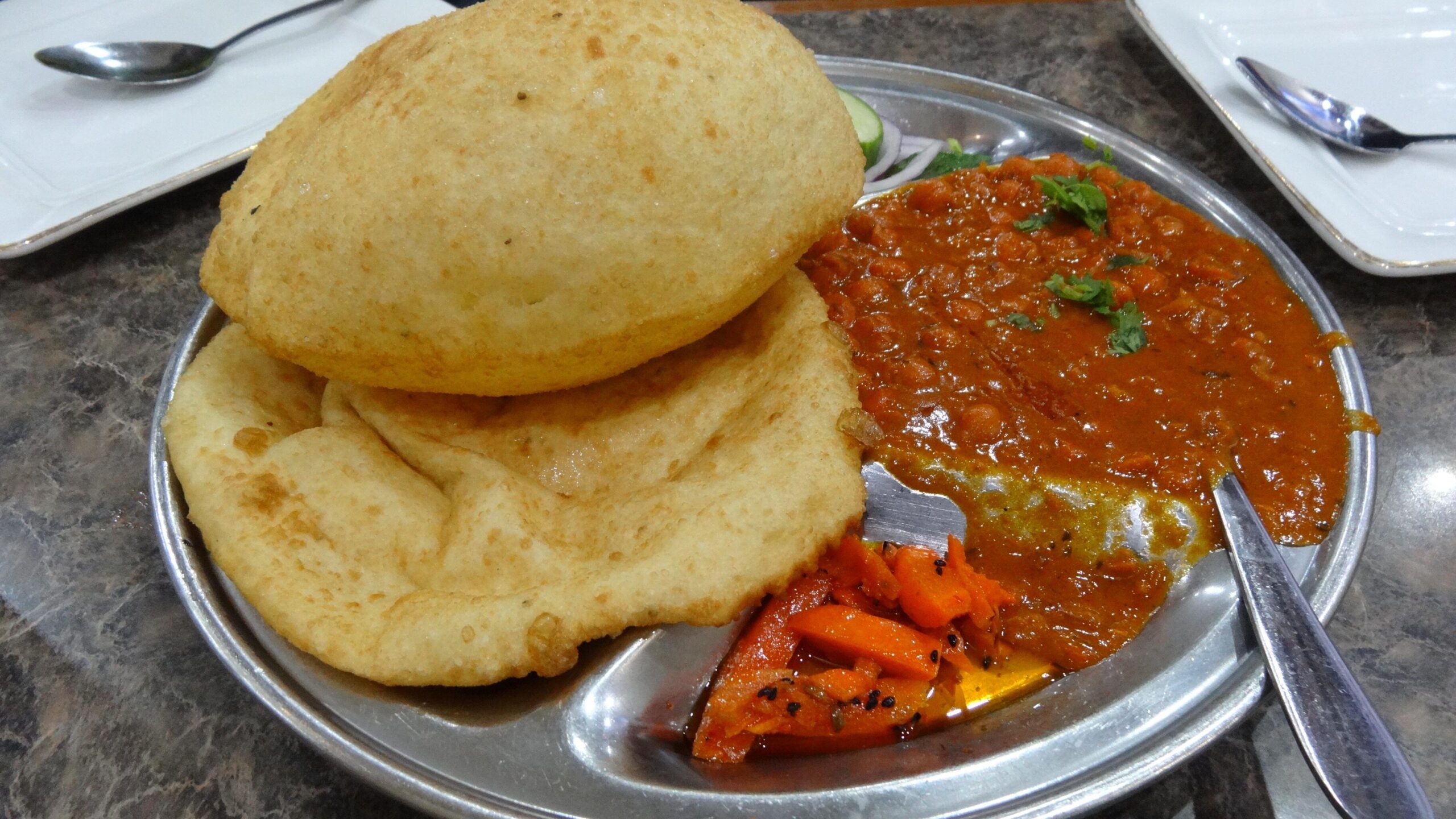Explore the rich history and allure of the Vaishno Devi Temple. Discover the best time to visit, nearby locations, ticket prices, famous food, weather, and reasons to go.
Nestled amidst the tranquil Trikuta Mountains in Jammu and Kashmir, India, the Vaishno Devi Temple stands as a beacon of faith and devotion for millions. This sacred shrine, dedicated to Goddess Vaishno Devi, is not only a spiritual haven but also a marvel of nature’s beauty. Whether you’re a devout pilgrim or an adventurous traveler, the journey to Vaishno Devi Temple promises a blend of spirituality, adventure, and cultural richness. This article dives deep into the history of the Vaishno Devi Temple, the logistics of visiting, nearby attractions, and much more, ensuring you have all the information you need for an unforgettable trip.

The Enigmatic History of Vaishno Devi Temple
The history of Vaishno Devi Temple is steeped in mythological tales and legends that have been passed down through generations. The temple is believed to be one of the 108 Shakti Peethas dedicated to the goddess Durga. According to legend, Vaishno Devi, an incarnation of Goddess Durga, took refuge in the cave that now houses the temple to escape the demon Bhairavnath. The story goes that Bhairavnath was captivated by her beauty and pursued her. To evade him, the goddess retreated into a cave, where she meditated for nine months. When Bhairavnath finally found her, she revealed her divine form and vanquished him. The demon’s repentance at the time of his death earned him a place at the temple, where his shrine is visited after the main darshan.
The Spiritual Significance
The Vaishno Devi Temple holds immense spiritual significance for Hindus. Pilgrims believe that a visit to this temple fulfills their desires and brings blessings. The journey itself, often undertaken on foot, is seen as an act of devotion and penance. The temple’s sanctum sanctorum, a cave, contains three natural rock formations known as the Pindis, representing the three forms of the goddess—Maha Kali, Maha Saraswati, and Maha Lakshmi. This trinity symbolizes the goddess’s omnipotence and her role as the nurturer, preserver, and destroyer.
Planning Your Visit: Costs, Ticket Prices, and Logistics
How to Get There
Reaching the Vaishno Devi Temple involves a mix of air, rail, and road travel. The nearest airport is the Jammu Airport, also known as Satwari Airport, located about 50 kilometers from Katra, the base camp for the temple. From the airport, you can hire a taxi or take a bus to Katra. The nearest railway station is also in Jammu, offering convenient train connections from major cities across India.
Trekking to the Temple
The trek to Vaishno Devi Temple starts from Katra and covers approximately 13 kilometers. Pilgrims can choose to walk, ride a pony, or take a palanquin. Helicopter services are also available for a quicker ascent, landing at Sanjichhat, just 2.5 kilometers from the temple. The trek route is well-maintained and has multiple refreshment points, medical aid, and resting places.
Ticket Prices and Other Costs
- Helicopter Ride: The cost for a one-way helicopter ride is around INR 1,000-1,500. Prices may vary depending on the season and demand.
- Pony/Palanquin Charges: Charges for ponies and palanquins vary based on the distance covered. Expect to pay around INR 700-1,000 for a pony ride and INR 3,000-4,000 for a palanquin.
- Accommodation: Katra offers a range of accommodation options, from budget hotels to luxurious resorts. Prices can range from INR 1,000 to INR 5,000 per night, depending on the amenities and proximity to the main market.
The Best Time to Visit Vaishno Devi Temple
Ideal Seasons and Weather Conditions
The best time to visit Vaishno Devi Temple largely depends on your weather preferences and tolerance for crowds. However, the temple is open year-round, and each season offers a unique experience.
- Spring (March to May): The weather is pleasant, with temperatures ranging from 15°C to 25°C. This is an ideal time for those who prefer moderate crowds and mild weather.
- Summer (June to August): This is the peak season for pilgrims, coinciding with the school holidays and the festival of Navratri. Temperatures can soar up to 30°C, making the trek slightly challenging but manageable.
- Autumn (September to November): Post-monsoon, the weather becomes cooler, and the crowds begin to thin out. The picturesque views and comfortable climate make it a great time to visit.
- Winter (December to February): Winters can be harsh, with temperatures dropping to freezing levels and snowfall at higher altitudes. However, for those who enjoy winter landscapes and a quieter pilgrimage, this is the perfect time.

Nearby Attractions and Locations
Bhairavnath Temple
No visit to Vaishno Devi Temple is complete without visiting the Bhairavnath Temple, located about 2 kilometers from the main shrine. It is believed that your pilgrimage remains incomplete without paying respects here. The path to this temple offers breathtaking views of the surrounding mountains and valleys.
Ardh Kuwari Cave
Halfway to the Vaishno Devi Temple is the Ardh Kuwari Cave, also known as the Garbha Joon Cave. This 15-foot-long cave is where Goddess Vaishno Devi is believed to have meditated for nine months. Pilgrims often rest here and seek blessings before proceeding to the main temple.
Patnitop
If you have some extra time, consider visiting Patnitop, a serene hill station located about 80 kilometers from Katra. Known for its lush green meadows, deodar forests, and panoramic views of the Himalayan range, Patnitop is a perfect getaway for nature lovers.
Savory Delights: Famous Food to Try
No trip to a new place is complete without indulging in the local cuisine, and the area around Vaishno Devi Temple offers some delicious options. The food here is primarily vegetarian, in line with the temple’s religious practices.
- Rajma Chawal: A staple dish in Jammu, this simple yet flavorful meal consists of red kidney beans cooked in a rich gravy, served with steamed rice.
- Kaladi: A traditional cheese made from cow’s milk, Kaladi is a popular snack. It is usually fried and served with chutney or bread.
- Kachalu: A spicy and tangy street food made from boiled potatoes and seasoned with a variety of spices.
- Chole Bhature: A popular North Indian dish consisting of spicy chickpeas served with deep-fried bread.


Weather
The weather at Vaishno Devi Temple varies significantly with the seasons, influencing the overall experience of the pilgrimage.
- Spring: Mild and pleasant, with blooming flowers and lush greenery.
- Summer: Warm and humid, but manageable with proper hydration and sun protection.
- Monsoon: Heavy rains can make the trek slippery, so caution is advised. However, the landscape is lush and beautiful.
- Winter: Cold and snowy, particularly in January and February. The views are spectacular, but the trek can be challenging due to icy conditions.
Five Compelling Reasons to Visit Vaishno Devi Temple
- Spiritual Fulfillment: The temple is one of the holiest sites in Hinduism, offering a profound spiritual experience.
- Scenic Beauty: The journey through the Trikuta Mountains provides breathtaking views and a peaceful environment.
- Adventure: The trek itself is an adventure, with options to hike, ride a pony, or even take a helicopter.
- Cultural Richness: The region is rich in culture, with local festivals, cuisine, and traditions adding to the experience.
- Historic Significance: With a history dating back centuries, the temple offers a glimpse into ancient Indian culture and mythology.
Nearest Airport and Transportation Options
The nearest airport to Vaishno Devi Temple is the Jammu Airport, also known as Satwari Airport. It is well-connected to major cities like Delhi, Mumbai, and Bangalore. From the airport, Katra is about 50 kilometers away and can be reached by taxi or bus. Jammu Railway Station is another major transport hub, offering easy access to Katra via rail.

Conclusion
The Vaishno Devi Temple is not just a pilgrimage destination; it’s a journey of faith, devotion, and discovery. Whether you’re drawn by the spiritual significance, the natural beauty, or the cultural richness, this sacred shrine offers something for everyone. With careful planning, you can make the most of your visit, ensuring a fulfilling and memorable experience. From the best time to visit and the costs involved to the local cuisine and nearby attractions, we’ve covered everything you need to know to embark on this spiritual adventure.
FAQ
Q1: What is the best time to visit Vaishno Devi Temple?
The best time to visit is during the spring (March to May) and autumn (September to November) for pleasant weather and fewer crowds.
Q2: How long does it take to trek to Vaishno Devi Temple?
The trek from Katra to the temple typically takes 6 to 9 hours, depending on your pace and the chosen mode of travel.
Q3: Can we book helicopter tickets in advance?
Yes, helicopter tickets can be booked online in advance. It’s advisable to book early, especially during peak seasons.
Q4: Is there any accommodation available at the temple?
While there are basic resting facilities at the temple, most visitors stay in Katra, where a wide range of accommodations is available.
Q5: What are the main festivals celebrated at Vaishno Devi Temple?
The major festivals celebrated include Navratri, Diwali, and Makar Sankranti. During these times, the temple is beautifully decorated and sees a surge in pilgrim numbers.
Q6: Is photography allowed inside the temple?
Photography is not allowed inside the sanctum sanctorum, but you can take pictures along the trekking route and in other areas.
Vaishno Devi Temple is a journey filled with spiritual bliss, natural beauty, and cultural insights. Whether you’re seeking blessings or simply looking to explore one of India’s most revered sites, this guide ensures you have all the essential information for a fulfilling trip. So, pack your bags, prepare your spirit, and embark on an unforgettable adventure to the Vaishno Devi Temple.

